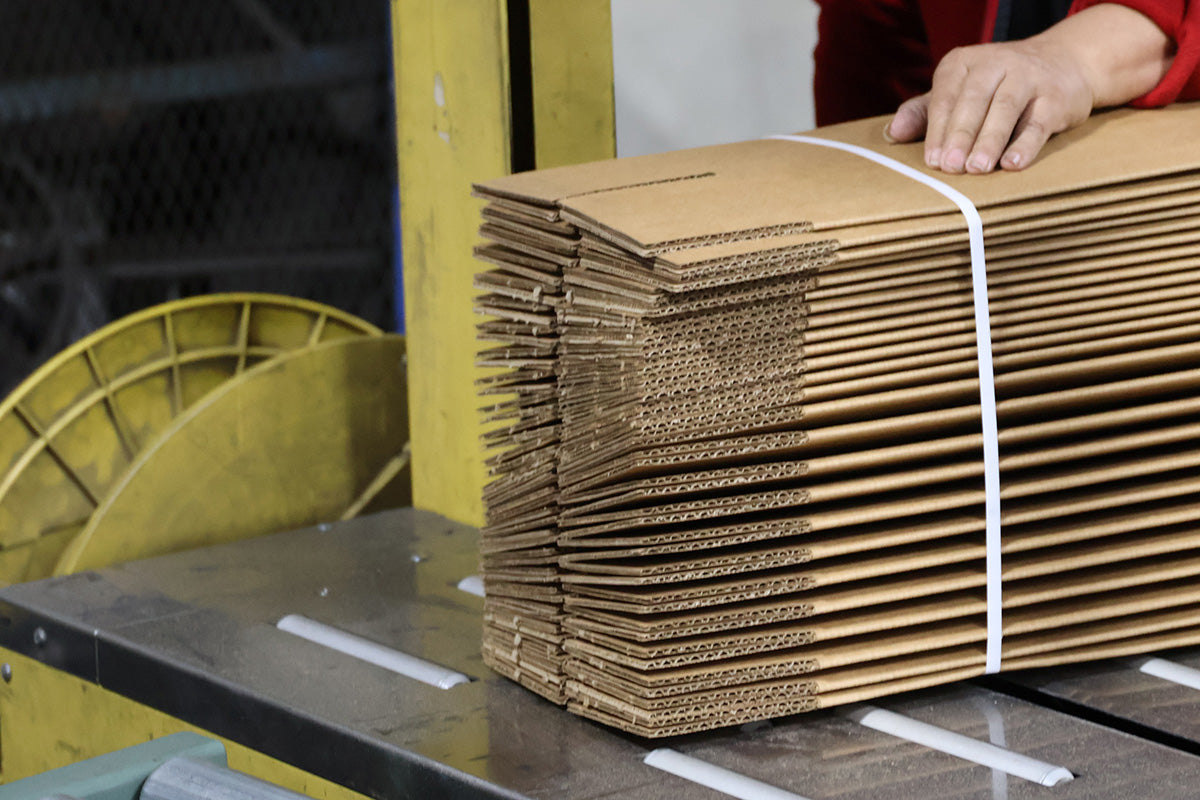
Small-batch cardboard box production — Common myths vs. Reality
Many entrepreneurs assume that producing cardboard boxes always means large orders and significant costs. At first glance, it seems logical — manufacturing is often associated with thousands of units and complex processes. Today, however, that’s no longer true.
Across Latvia, more and more companies order small batches of boxes, allowing them to adapt packaging to their needs and budget. This is a smart solution for new online stores and seasonal projects that don’t require big volumes. What’s more, a smaller order doesn’t automatically mean a higher price per box — flexibility and faster turnaround often become the biggest advantages.
In this article, we’ll debunk popular myths about custom box production and show how small orders can be practical and cost-effective for any business.
Myths about cardboard box production
Myth #1: Boxes can only be ordered in large quantities
Production technologies have evolved — today, various machines (for example, CNC cutters) allow small runs without expensive cutting dies. This means manufacturers can support smaller businesses, seasonal products, or test batches without losing efficiency or quality.
Myth #2: Small orders are always very expensive
Price depends not only on quantity, but also on the box construction and material. If you choose a standard FEFCO model without complex printing, the cost per unit can remain very affordable.
Myth #3: Quality is lower with small orders
Quality is determined by the cardboard and equipment — e.g., the strength of triple- or five-layer corrugation, grammage, and the production line itself — not by order size. Boxes, regardless of run size, are made on the same machines and to the same manufacturing standards. Small-batch boxes are therefore durable, safe, and fully meet the specified requirements.
Myth #4: Delivery will take a long time
Lead time is influenced by more than volume — market specifics matter, too. In Latvia, where the market is smaller than in major EU countries, manufacturers often work with flexible schedules. Small orders can be slotted in between larger runs without significant delays. In this case, the smaller market is actually an advantage — don’t hesitate to request small batches; producers are used to different volumes and can adapt, ensuring fast and accessible delivery.
How to keep box prices low — even for small orders
Choose a construction from the FEFCO standard
FEFCO standards offer hundreds of constructions, but not all are equally cost-effective in small runs. By choosing a proven, commonly used design, you can avoid pricey custom dies or complex setup — a major saving when the order is small.
FEFCO 0201 — the classic, most economical choice
FEFCO 0201 with straight flaps is the most economical and widely used option for e-commerce shipments. It requires no extra processing or complicated setup, which lowers the unit cost. If this construction doesn’t fit your product size or specific requirements, look for a manufacturer who can produce boxes on CNC equipment. CNC enables small batches of non-standard sizes without expensive dies — keeping prices accessible and maintaining flexibility.
Select the right cardboard type
The cardboard you choose directly affects both price and strength. For small parcel-locker boxes (XS or S), a thinner 3 mm / 3-layer board is sufficient — it provides adequate protection and reduces material costs. For larger boxes that must carry heavier loads, a 4 mm / 3-layer board is a better choice — it guarantees the needed strength without excess material. Picking the correct thickness prevents overpaying for unnecessary durability your shipment doesn’t require.
Order without printing
Printing is one of the main factors that drives up cost in small batches. At low volumes, print setup is disproportionately expensive relative to the box itself. If the goal is cost optimisation, choose unprinted boxes and use stickers or a simple brand stamp. You’ll preserve brand identity while keeping production costs down.
How to order custom cardboard boxes
1. Measure your product and estimate shipment weight. This defines not only dimensions, but also the appropriate board type and thickness to safely carry the load.
2. Define the required internal dimensions. The box should be slightly larger than the product to leave space for protective materials.
3. Prepare a reference. Specify a FEFCO code or attach an image of the desired box so the manufacturer clearly understands what you need.
4. Send requests to multiple manufacturers. Compare prices, lead times, and production terms.
5. Verify material quality. Ask for the board type, flute thickness, and grammage to ensure the box fits the intended weight.
6. Start with a small batch. Order the smallest practical first run to validate strength and quality in real use.
Today, custom cardboard boxes don’t have to be a complicated or expensive project. With flexible technologies and experienced local manufacturers, it’s possible to order smaller batches at accessible prices. This gives businesses the freedom to experiment, test, and find the best solution without unnecessary risk.
Why choose PAKFUL?
◼️ We produce custom cardboard boxes, including non-standard sizes
◼️ We offer free consultations on sizes and materials
◼️ We make small batches starting from 100 units
Email: veikals@pakful.lv
Phone: +371 26660018
